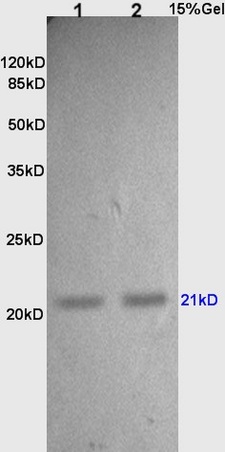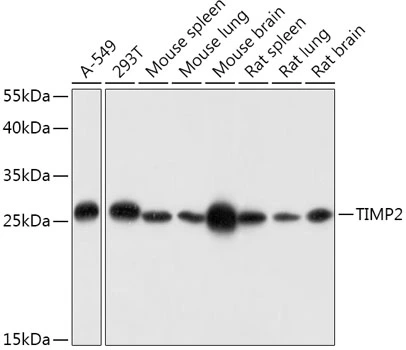![IHC-P analysis of human placenta tissue using GTX17817 TIMP2 antibody [TIMP2/2044]. IHC-P analysis of human placenta tissue using GTX17817 TIMP2 antibody [TIMP2/2044].](https://www.genetex.com/upload/website/prouct_img/normal/GTX17817/GTX17817_20200115_IHC-P_957_w_23060620_345.webp)
IHC-P analysis of human placenta tissue using GTX17817 TIMP2 antibody [TIMP2/2044].
TIMP2 antibody [TIMP2/2044]
GTX17817
ApplicationsELISA, ImmunoHistoChemistry, ImmunoHistoChemistry Paraffin
Product group Antibodies
ReactivityHuman
TargetTIMP2
Overview
- SupplierGeneTex
- Product NameTIMP2 antibody [TIMP2/2044]
- Delivery Days Customer9
- Application Supplier NoteIHC-P: 1-2microg/ml for 30 minutes at RT. ELISA: 2-4microg/ml (for coating). *Optimal dilutions/concentrations should be determined by the researcher.Not tested in other applications.
- ApplicationsELISA, ImmunoHistoChemistry, ImmunoHistoChemistry Paraffin
- CertificationResearch Use Only
- ClonalityMonoclonal
- Clone IDTIMP2/2044
- Concentration0.2 mg/ml
- ConjugateUnconjugated
- Gene ID7077
- Target nameTIMP2
- Target descriptionTIMP metallopeptidase inhibitor 2
- Target synonymsCSC-21K, DDC8, metalloproteinase inhibitor 2, testicular secretory protein Li 57, tissue inhibitor of metalloproteinases 2
- HostMouse
- IsotypeIgG1
- Protein IDP16035
- Protein NameMetalloproteinase inhibitor 2
- Scientific DescriptionThis gene is a member of the TIMP gene family. The proteins encoded by this gene family are natural inhibitors of the matrix metalloproteinases, a group of peptidases involved in degradation of the extracellular matrix. In addition to an inhibitory role against metalloproteinases, the encoded protein has a unique role among TIMP family members in its ability to directly suppress the proliferation of endothelial cells. As a result, the encoded protein may be critical to the maintenance of tissue homeostasis by suppressing the proliferation of quiescent tissues in response to angiogenic factors, and by inhibiting protease activity in tissues undergoing remodelling of the extracellular matrix. [provided by RefSeq, Jul 2008]
- ReactivityHuman
- Storage Instruction-20°C or -80°C,2°C to 8°C
- UNSPSC12352203




![IHC-P analysis of human colon carcinoma tissue using GTX21828 TIMP2 antibody [3A4].](https://www.genetex.com/upload/website/prouct_img/normal/GTX21828/GTX21828_20191203_IHC-P_87_w_23060620_841.webp)